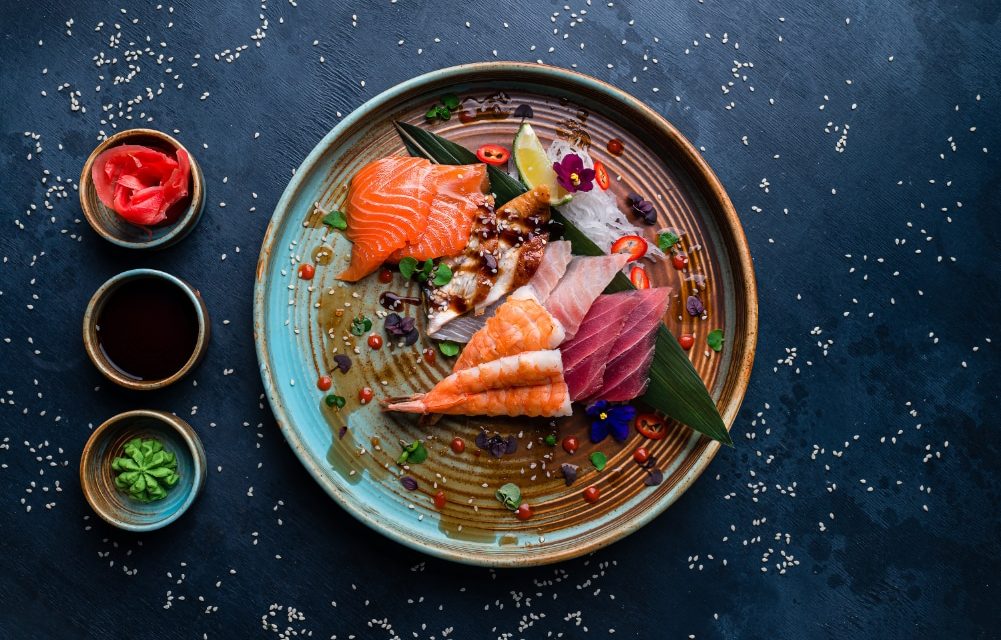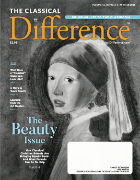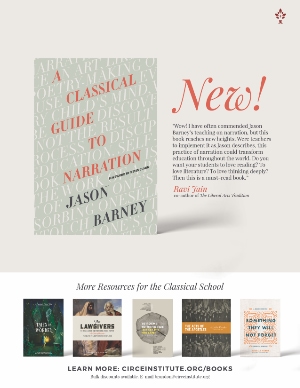How Do You Teach Beauty?
by Jon Paul Pope
You’ve probably heard the phrase “truth, goodness, and beauty” repeated more than once at your child’s school. These words roll off the tongue as though they’re similar to each other, but one of the three is so much harder to teach. Truth can be taught through words, and goodness can be taught through actions and behavior. But how do we teach beauty? How do we make sure that our graduating seniors have good taste?
For many parents and many schools, the simple answer is to make the arts mandatory. Yes, we must have that—your children should certainly draw, paint, learn instruments, and join a choir. But instruction in various arts is not quite the same as cultivating good taste. Learning the steps to make a proper cup of coffee does not give you a palette that can taste blueberries in an Ethiopian Yirgacheffe. Craft is not the same thing as contemplation.
Another way to approach the teaching of beauty is to fold works of art into our environment—to make beautiful spaces for children and let those spaces shape their taste. This is a commendable idea: Our homes and schools should be designed and decorated to the best of our abilities. Fine art should adorn our halls. A string quartet should—at least once—serenade your family while they eat delicious food served on ceramics. But while this might be the best way to cultivate taste, it’s out of everyday reach for most of us.
Here is my slightly more modest proposal for parents (and schools): treat Aesthetics as something that can be taught rather than hoping it will be picked up along the way. Then, do your best to teach it.
After years of supplementing literature classes with art, a colleague and I developed an Aesthetics course in order to approach beauty as an end in itself. The class is a voluntary elective and there are no grades. This means that it’s remarkably similar to activities that take place in the home, and therefore easier for parents to imitate. Older generations may remember an “art appreciation” class, but an Aesthetics class goes beyond the typical fine arts subjects to include anything that might fall under the blissfully broad banner of beauty: cuisine, dance, fashion, and film in addition to painting, sculpture, and music. The possibilities are as limitless as our loves.
The curriculum changes from year to year, but here are some guiding principles I’ve stuck with, along with specific examples should you wish to try this at home.
Practice Seeing
Pick lofty art and excellent films, and spend time looking at them. It won’t be easy at first, but the classics are more accessible than you think. Bring home library books of paintings by Titian, Caravaggio, and Sargent, and visit your local museum. Watch movies like The Passion of Joan of Arc and The Third Man. If you don’t have a charming old theater nearby, this is one of the few times when I think that classical families should make good use of a screen.
Practice Listening
Developing good taste takes time. In our class, we make use of our dedicated hour to listen to long pieces of beautiful music in one sitting. At home, you can do this by gathering everyone into a room to just listen to a concerto or symphony and treat it as the main event, not a piece of background music. It’s easier to do this in a concert hall, of course, but listening to “The Netherlands Bach Society” on YouTube is a good start.
Practice Tasting
Have you tried all of the flavors that can be tasted where you live? Bring home some unusual cheeses on your next grocery run. Travel across town for Vietnamese phở. When you go out to eat, pick something that stretches your taste. Talk about what makes the food so good, but don’t spend too much time critiquing—the goal is to taste and to be changed by the experience.
Limit Theory
There are brilliant books and essays about beauty that are certainly worth reading (such as Roger Scruton’s Beauty: A Very Short Introduction), but be careful that you don’t spend more time arguing about what makes something beautiful than simply enjoying beauty together.
Blend the Material
Even the pursuit of beauty can get stuck in a rut. If you’ve watched lots of films, switch to symphonies—and always be looking for the connections that are revealed when you move between them. Novelists can teach us about painting, as in Gogol’s “The Portrait.” Filmmakers can teach us about food, as in Babette’s Feast and Jiro Dreams of Sushi. Singers, dancers, and orchestras can help us feel stories, as in Wagner’s Tristan und Isolde and Prokofiev’s Romeo and Juliet.
Take Field Trips
I’m grateful for the technology that makes good art so easily available, but there is no substitute for showing young people where to find these treasures in the real world. Every year, our class takes one big trip: We see at least one live professional performance, visit a great art collection, and eat one first-rate dinner. It has consistently proven to be something that the students don’t easily forget. You can give these experiences to your children as well—give them a taste for beauty, and then show them how and where to fill it. In doing so, you will shape their vision for what a good adult life looks like—a vision that will stick with them for years to come.

Jon Paul Pope
teaches English and Aethetics at Regent Preparatory School of Oklahoma












